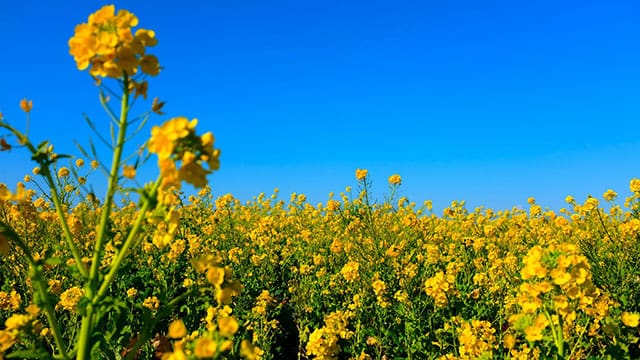Research could boost farmers’ profits from one of Canada’s most important cash crops – canola
New research from the University of Alberta aims to boost the genetic diversity of canola, Canada’s cash crop superstar, by diving into the DNA of its quirky cousins: broccoli, cauliflower, cabbage, and kale.

Habibur Rahman
Dr. Habibur Rahman and his team of plant scientists are on a mission to find the golden genes that can turn canola into an even more profitable crop. “This work is taking us to the next level of improved genetic diversity that will make hybrid canola stronger,” said Rahman, a professor in the Faculty of Agricultural, Life & Environmental Sciences, who has clearly spent more time in the field than your average sports fan.
Canola, a.k.a. liquid gold, rakes in a whopping $29.9 billion annually for the Canadian economy and is a big hit on the global stage, pulling in $14.4 billion a year. Grown mainly in Alberta, Saskatchewan, and Manitoba, Canadian farmers harvest about 20 million tonnes of canola each year, with hybrid cultivars making up more than 95 percent of the crop. That’s a lot of seeds, folks.
Rahman’s plan involves using the genetic secrets of Brassica oleracea – fancy talk for broccoli, cauliflower, cabbage, and kale – to supercharge canola’s seed yield. “Since oil is extracted from harvested seeds,” Rahman noted, “if you harvest more seed, you will get more oil.” In other words, more bang for your buck.
This project, backed by the Natural Sciences and Engineering Research Council of Canada Discovery Grant program, builds on Rahman’s past research, which has already shown that Brassica oleracea packs some punch with genes for early flowering and high oil content. Now, Rahman’s team is on the hunt to pinpoint which genes specifically boost seed yield.
Partnering with Bayer Crop Science, Rahman and his crew will develop new canola lines to create hundreds of hybrids, testing them in field trials across the Prairie provinces. They’re looking for hybrids that bloom just right, resist disease, and produce oil like there’s no tomorrow.
“We’re identifying the genes or chromosome regions of Brassica oleracea that contribute to high seed yield in canola,” Rahman explained. “The findings can be used to increase the efficiency of breeding new hybrids,” he added, with the precision of a genetic matchmaker.
Rahman expects the resulting canola lines to be free of unwanted traits like late flowering, which they inherited from their veggie ancestors. “By continuous breeding, we’re trying to keep the good genes for higher yield and other positive traits,” he said.
Once the new and improved genetic material is ready for prime time, it will help Bayer Crop Science and other breeders churn out new commercial hybrids. “It takes many years to develop superior hybrid canola cultivars, but the genetic research we are doing is important to maintaining the profitability of this crop at the farm level,” Rahman said, proving that patience really is a virtue – even in the fast-paced world of canola research.
| Staff
The opinions expressed by our columnists and contributors are theirs alone and do not inherently or expressly reflect the views of our publication.
© Troy Media
Troy Media is an editorial content provider to media outlets and its own hosted community news outlets across Canada.

